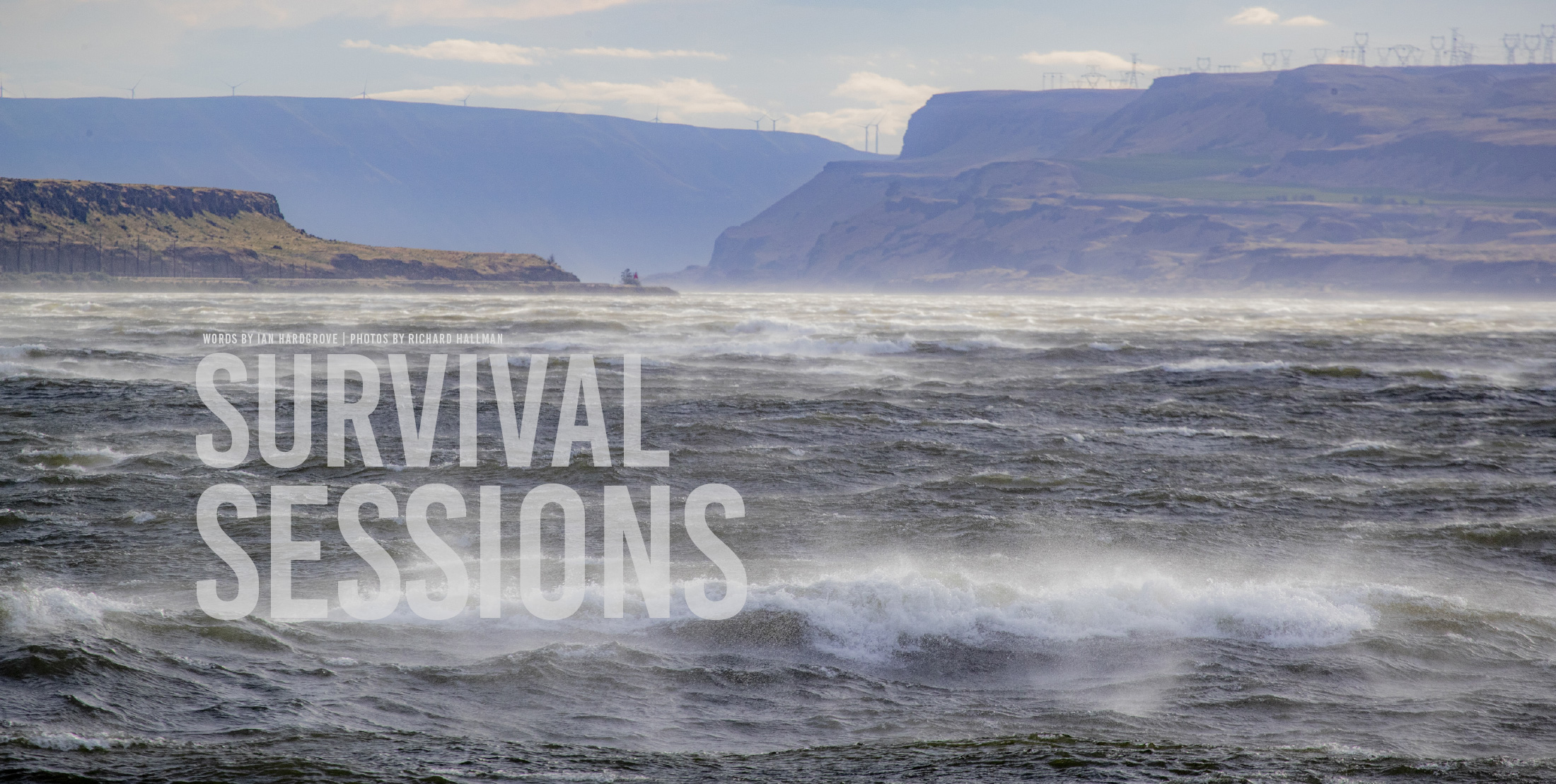 Professional photographer Richard Hallman stepped out of a darkened convenience store into a savage wind tearing through the empty streets of Biggs, Oregon, a one-horse town 40 minutes east of Hood River. With leaves and debris whipped into the frenzy of hurricane caliber winds, the massive low-pressure system presiding over the Columbia River Gorge had damaged the electrical grid, shuttering the lights and businesses of small towns dotted along its shores. The situation escalated as Richard and Vetea Boersma walked toward their vehicle and watched a 30-foot section of roof peel off a motel across the street.
Professional photographer Richard Hallman stepped out of a darkened convenience store into a savage wind tearing through the empty streets of Biggs, Oregon, a one-horse town 40 minutes east of Hood River. With leaves and debris whipped into the frenzy of hurricane caliber winds, the massive low-pressure system presiding over the Columbia River Gorge had damaged the electrical grid, shuttering the lights and businesses of small towns dotted along its shores. The situation escalated as Richard and Vetea Boersma walked toward their vehicle and watched a 30-foot section of roof peel off a motel across the street.
Leaving Biggs’ single, now non-functioning traffic light behind, Richard turned his van to the east and watched out of the corner of his eye as aerosolized water blew off the tops of the Columbia’s rolling swells and kept pace with the speed of the van, the speedometer pegged around 70mph. Despite the ferocity of the jumbled-up storm winds funneling eastward through the Columbia River Gorge, Vetea studied the thundering river in anticipation of a groundbreaking session.
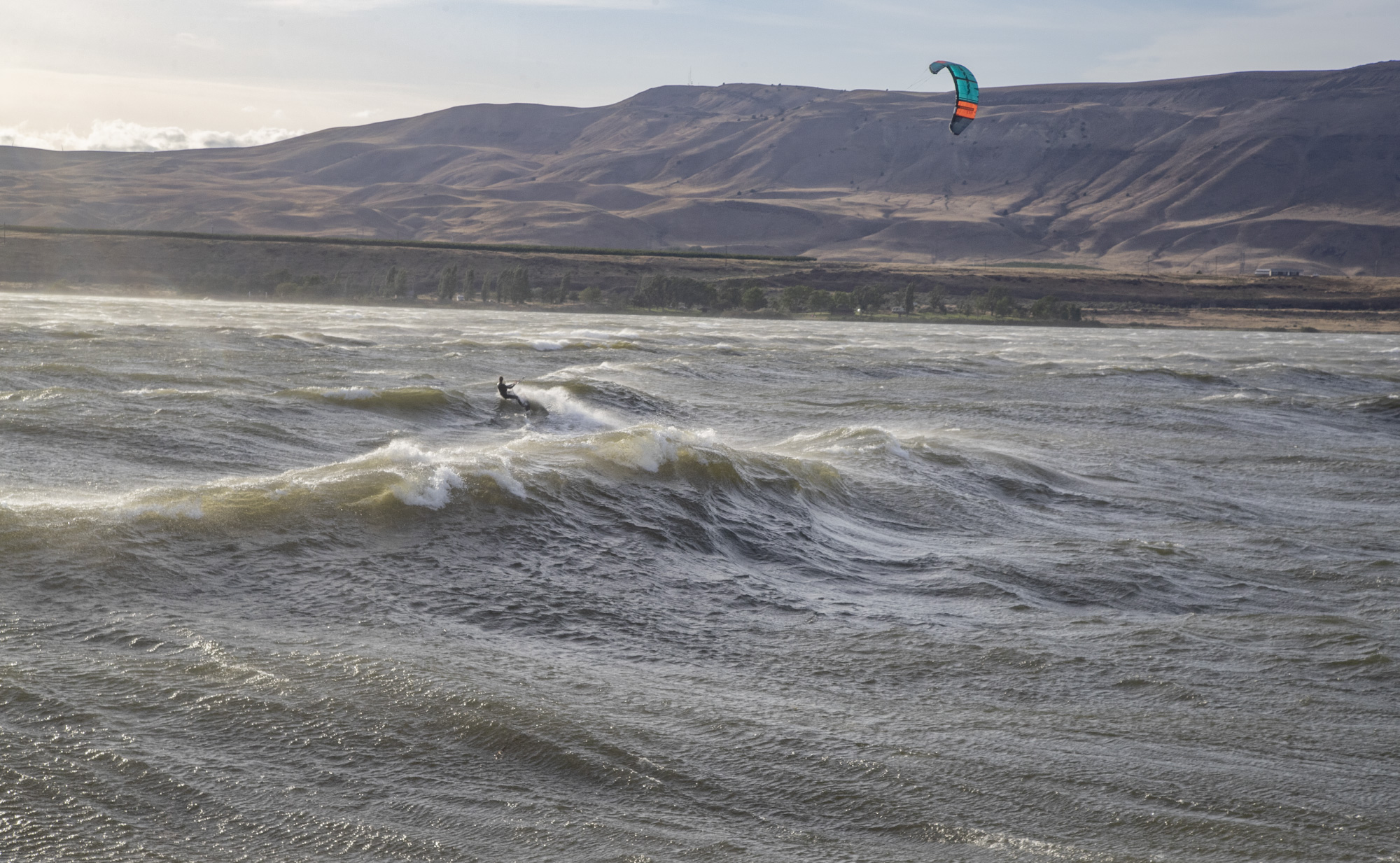
According to professional photographer Richard Hallman, “May 30, 2020, was hands down the windiest day I have experienced in 27 years.”
As a 27-year veteran of life in the Gorge, Richard has spent the bulk of his adult life witnessing the cold air of Portland accelerating towards the warmer basin east of the Cascade Mountains as it creates a venturi-influenced wind tunnel of unparalleled strength. Yet the forecast for May 30, 2020, was on track to record wind speeds rarely seen on the network of sensors lining the Hood River corridor. A low-pressure storm was forecasted to produce winds averaging 50mph with gusts to 70mph, accompanied by heavy rain and thunderstorms that showed promise of tapering into clearer skies towards the late afternoon.
“The forecast for May 30, 2020, was on track to record wind speeds rarely seen on the network of sensors lining the Hood River corridor.”
Having begun his day at the Hatchery, Richard photographed windsurfers at the spot known to collect the Gorge’s larger swells careening down one of the straighter fetches of the winding river. With rollers ranging in the 10-12’ size, the morning winds were averaging 40mph with gusts to 50mph, yet Richard kept his phone tuned to the high wind advisory for Arlington on the eastern end of the Gorge. After calling signals with megaloop enthusiast Vetea Boersma, they loaded into Richard’s van and headed east as the storm unloaded hail and toppled power poles across the region. Pools of water formed in the streets, textured by a million ripples seduced into micro-whitecaps by the ferocious wind. Vetea brought along his stepbrother Wyatt to help with launching and log some video, but as the van battered its way down the storm-swept highway, Vetea was losing hope as buckets of rain seemed to cloud his aspirations for a clean, 50-knot session.
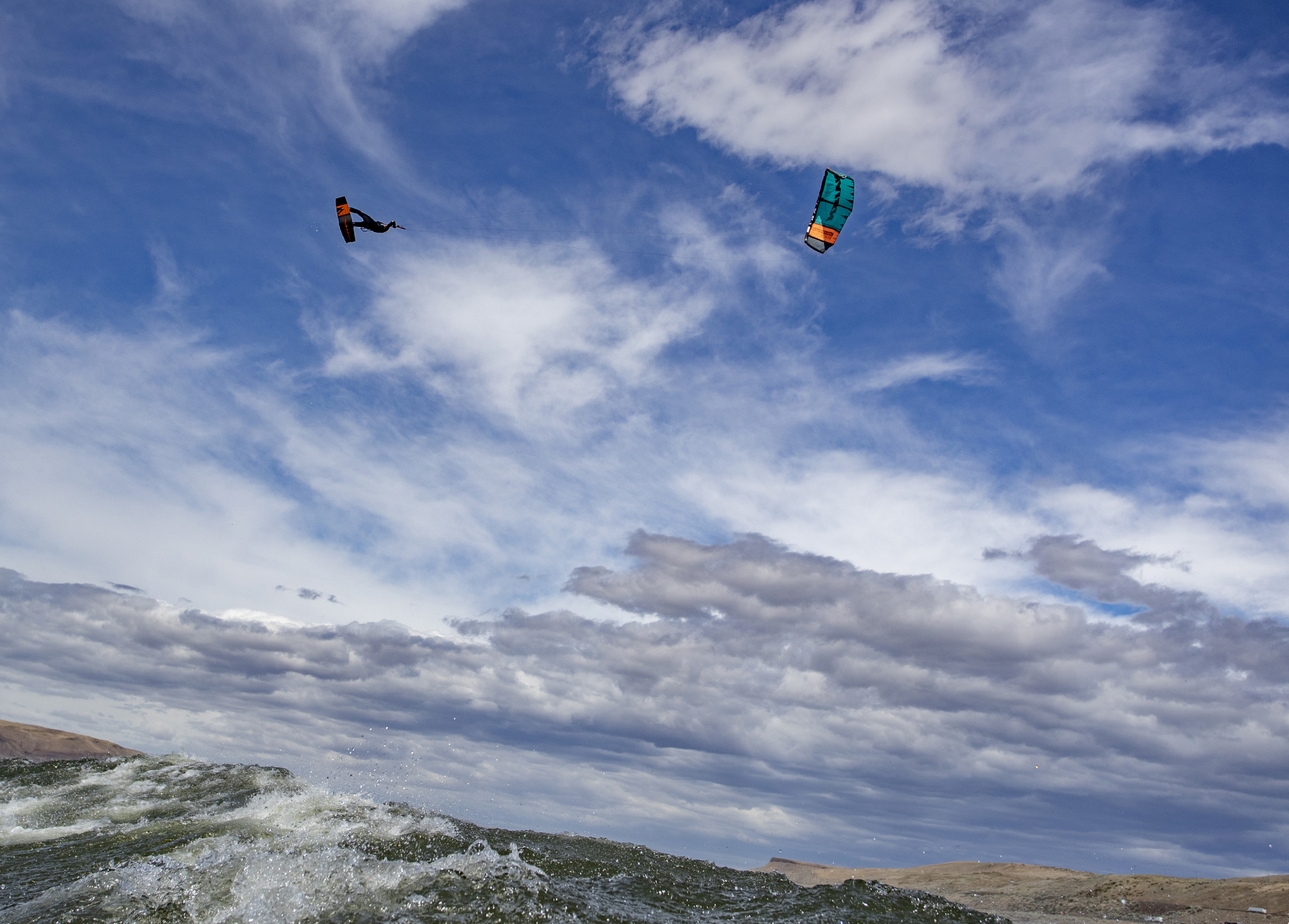
As an aspiring KOTA contestant, Vetea has spent the last year chasing the Gorge’s windiest sessions from Rooster Rock to as far east as Arlington. Addicted to the acceleration of heaving megaloops and late backroll spins, Vetea is climbing the ranks as one of the USA’s top big air riders.
Having just passed an overturned semi-truck in the center divider, Richard pulled his van off the highway and under the overpass towards Arlington’s beach park with not a single person in sight. The place was empty; no cars were in the gravel lot, and there were no curious windsurfers or kiteboarders””it was just Vetea, his stepbrother and Richard standing in front of thundering waves, howling wind and the chaotic patchwork of a stormy sky.
As Vetea rigged his 7m Pivot, he could feel the electricity in the air as perceptible tingles of shock ran through his arms. Huge walls of gust would occasionally upset the rigging process, tangling lines and threatening to blow away the kite or knocking Vetea off balance and then to the ground. As he slipped into his warmest wetsuit, Vetea got a call from a friend that warned him the sensor was topping out at 70-knots””the voice stated facts: “Dude, you are going to die, are you insane?” But Vetea’s mind was set. As a committed big air rider with dreams of competing in The King of the Air, he believed that these are the moments to live for. Vetea reminded his friend, “These are the conditions I have been dreaming of, the windiest conditions the Gorge has ever seen and with huge swell””It’s time!”
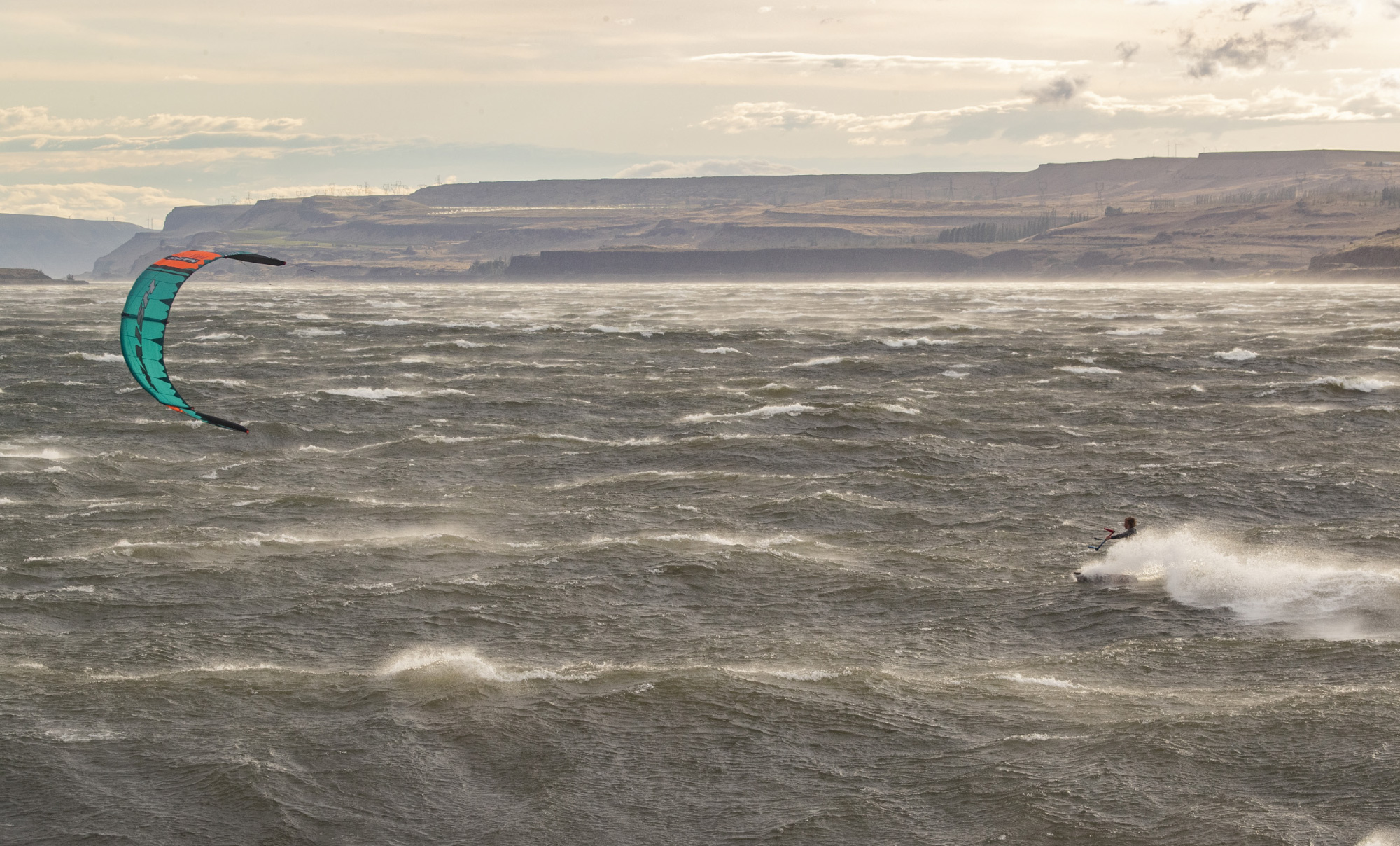
Looking west as the storm descended over the state of Oregon, the ominous skies were replaced with mixed clouds as clearing winds scoured the atmosphere. Overpowered by a couple of kite sizes, Vetea charges upwind on his Pivot, bucking through the turbulent winds like a bull.
The launch was the part of greatest concern. Arlington’s beach park is rocky and doesn’t provide much room for error. Standing on an outcrop of rocks, with the kite still in Vetea’s stepbrother’s hand, the Pivot was lurching forward while fully sheeted out, clearly exceeding the boundaries of its accepted wind range. Vetea raised his thumb in the air, and as Wyatt let go of the kite, and despite the ample depower built into the Pivot, the 7 meter’s pull was more than his foothold could resist on the sharp rocks. Accelerating across 10 feet of uneven cobblestones with his Monarch twin tip in hand, Vetea improvised five swift and slightly resistive steps before slamming safely into the water.
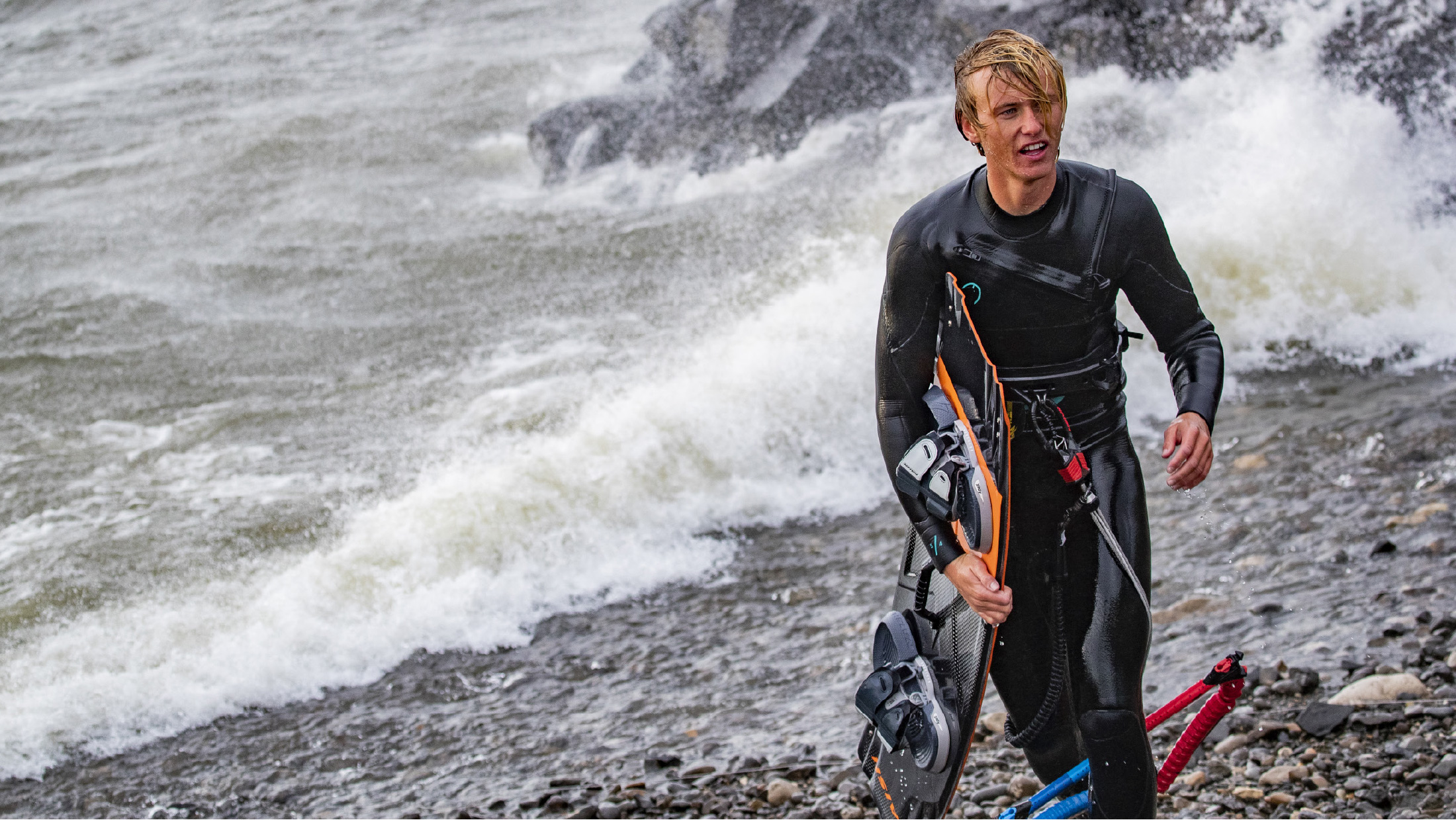
Surrounded by jetty rocks and sharp cobblestones, Arlington’s rudimentary launch requires caution on a normal day, but in 50-plus knot conditions, reaching the water can be a hair-raising experience.
From behind his lens, Richard watched with concern as Vetea’s high stakes solo session promptly kickstarted with a giant airborne send-off from a 15-foot swell. Vetea’s Pivot continued to pull him into the upper atmosphere, gaining serious height while drifting downwind for what seemed like a football field. Richard remarked to Wyatt, “He probably had time to radio the nearest airport tower and submit his flight plan.” Having landed and set his board’s rail upwind, Vetea methodically edged through the chaotic troughs, occasionally losing the fight and slipping into an uncomfortable stutter of hockey stops. Through Richard’s viewfinder, Vetea’s kite looked like a raging bull, harnessing the wind’s turbulent punches as Vetea’s upwind efforts resembled a strongman’s tug-o-war contest. Massive swells crashed on the upwind jetty and Vetea fought the wind with unrelenting determination as it raged in the 50-knot plus range.
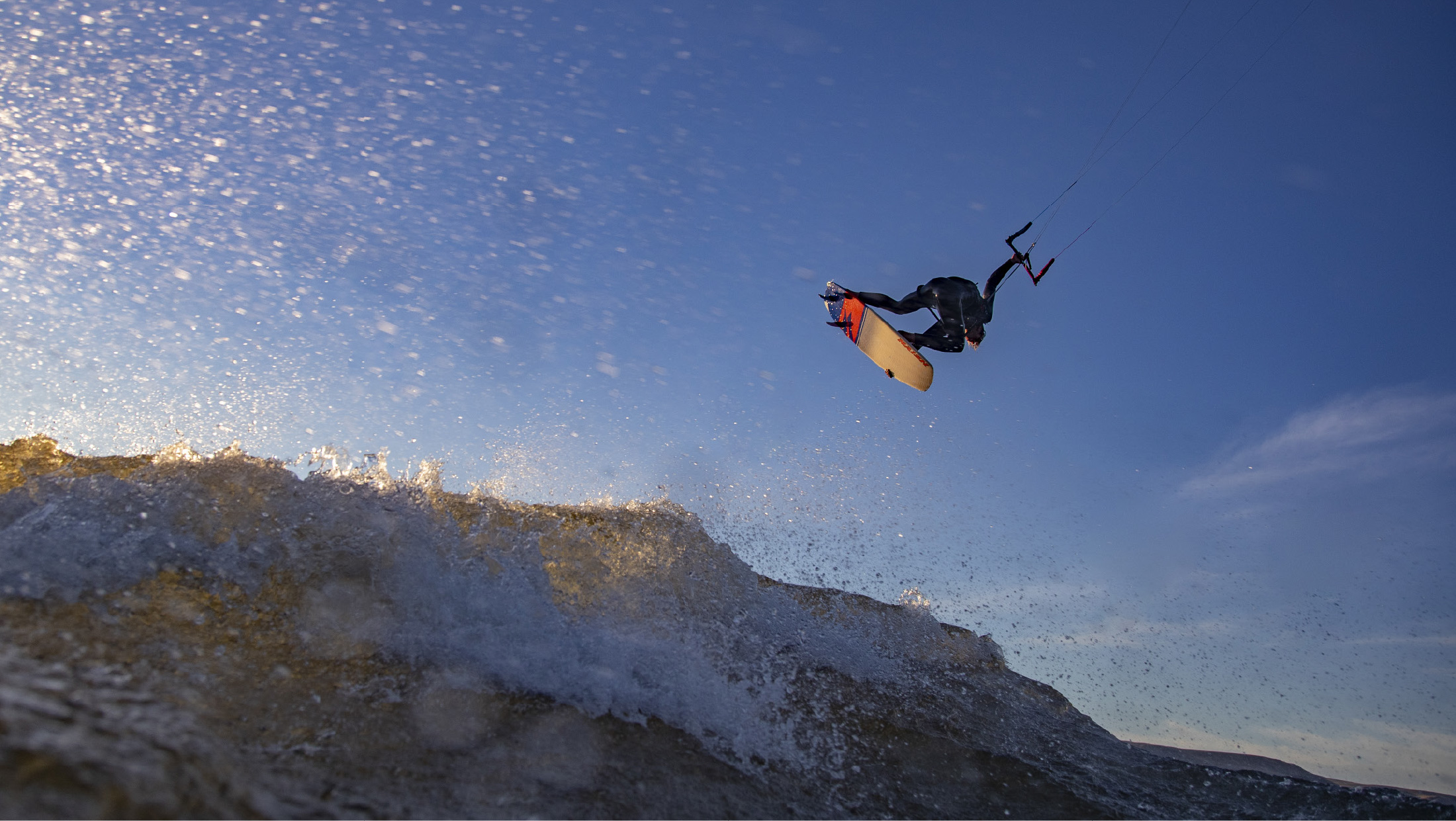
Having grown up in Hood River, Vetea is a master of all disciplines from strapless freestyle to foilboarding, but his true passion is the big air megaloop style of riding showcased at the King of the Air.
As the sky cleared and the wind persisted, Vetea acknowledged that the 7m was beyond insane””it was pure survival. As he landed his kite and wrapped up his equipment, he reflected, “I should have been on a 4m or 5m,” noting that he didn’t need to sheet the bar to go as a small tug would send him flying through the sky or off his edge. From the safety of the warm van, Vetea was stoked to have made it back alive and in one piece after surviving the upper limits of kiteboarding.
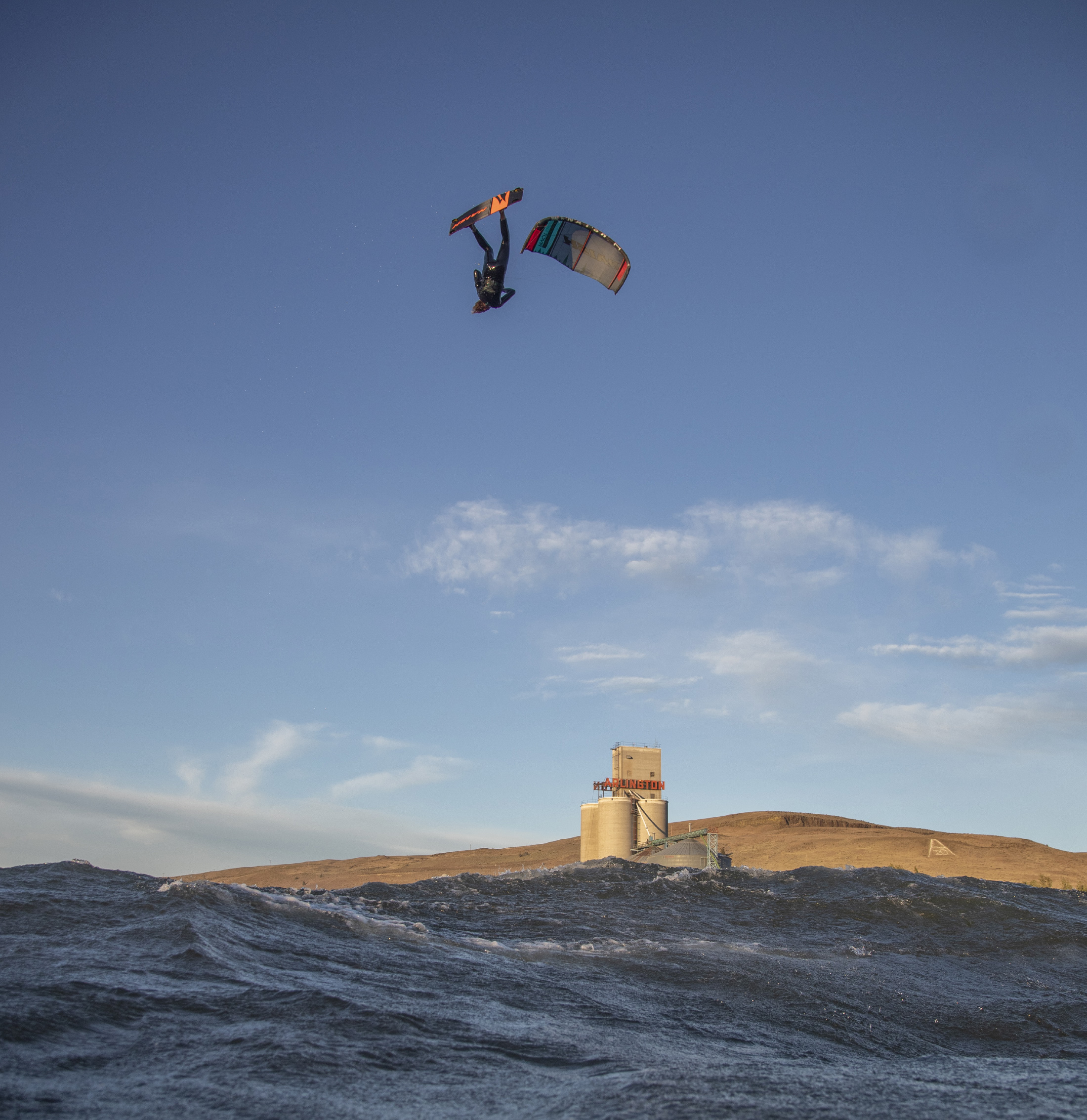
As an aspiring KOTA contestant, Vetea has spent the last year chasing the Gorge’s windiest sessions from Rooster Rock to as far east as Arlington. Addicted to the acceleration of heaving megaloops and late backroll spins, Vetea is climbing the ranks as one of the USA’s top big air riders.
With the sun fading behind the Cascade Mountains, Richard steered the van west along Highway 84 directly into a headwind that left the van’s accelerator pedal pegged to the floor. “The van feels like it’s towing a semi-truck trailer without wheels,” laughed Richard as they reflected on the intense session of the day. Later that evening, Richard checked the wind graph and noted Arlington’s wind chart featured wild spikes up to 80mph. Both Richard and Vetea agree that the forces of the Gorge might have won the battle, but Vetea’s survival session will go down in the history books of Hood River kiteboarding.

This article was featured in our winter 2021 issue, Vol. 17, No. 3. Want more like this? Subscribe to The Kiteboarder Magazine.

